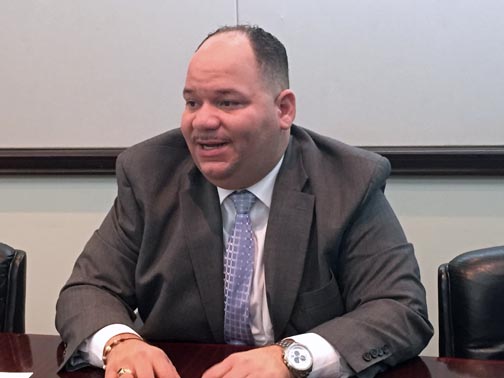Census: Puerto Rico loses 177K residents in 4 years

Puerto Rico has lost 177,392 residents either to migration or death in the last four years, putting pressure on the economy, as well as specific sectors, — such as retail — that will need to readjust their business models to provide for future consumer behavior.
To that end, research firm Anderson Research International is developing a study aimed at producing quarterly statistics to document the impact of the seemingly unstoppable population shrink affecting Puerto Rico for the better part of the last decade.
According to estimates, Puerto Rico’s population has fallen from 3,725,789 on April 1 , 2010, to 3,548,397 on July 1, 2014.
The Anderson Migration Report applies methodology used by several government agencies, such as the U.S. Census Bureau, the U.S. Bureau of Transportation Statistics and the Puerto Rico Ports Authority, said Edwin Aquino, president of Anderson Research.
According to Anderson’s research, 122 people are leaving Puerto Rico on a daily basis, “so companies that depend on offering products or services need to know how many people have left and their traits — how much they spent on food, how many cars they had, how much they paid in utilities,” said Aquino.
“Many companies, business owners and executives in Puerto Rico invest much effort in learning the economic outlook and focus only on trends included in the historical results of the sectors in which they are established,” he said.
“The problem with this behavior is that executives tend to be cautious when investing. This is so because they are not clear how economic forecasts will affect their organization; and data does not present the consumer profile,” Aquino said.
Most of the people that have left Puerto Rico are professionals with moderate to high income earnings — between $30,000 and $120,000 a year — including attorneys, doctors, CPAs and architects, Aquino said.
“The people who are leaving know English, are educated, highly technological and aren’t afraid of living somewhere else,” Aquino said.
One example Aquino used to illustrate how migration is affecting the local economy is in retail, saying that on average, a local consumer will spend about $750 a month on groceries. When that average is multiplied by the 122 people that are leaving on a daily basis, the outcome is formidable pressure on the retail sector.
“The grocery industry is becoming very competitive in the sense that they must drop prices, which leads to operational expenses, just to grab clients,” he said. “But the migration report can provide information on the estimated volume of losses and the consumer’s profile so they can make adjustments and balance the alternatives they have per category.”
Anderson is profiling 145 specific categories, including entertainment, beauty products, educational books and materials, as well as insurance.
Local companies interested in receiving the data have until March 31 to sign up. The first final quarterly report will be published in July, Aquino said.












